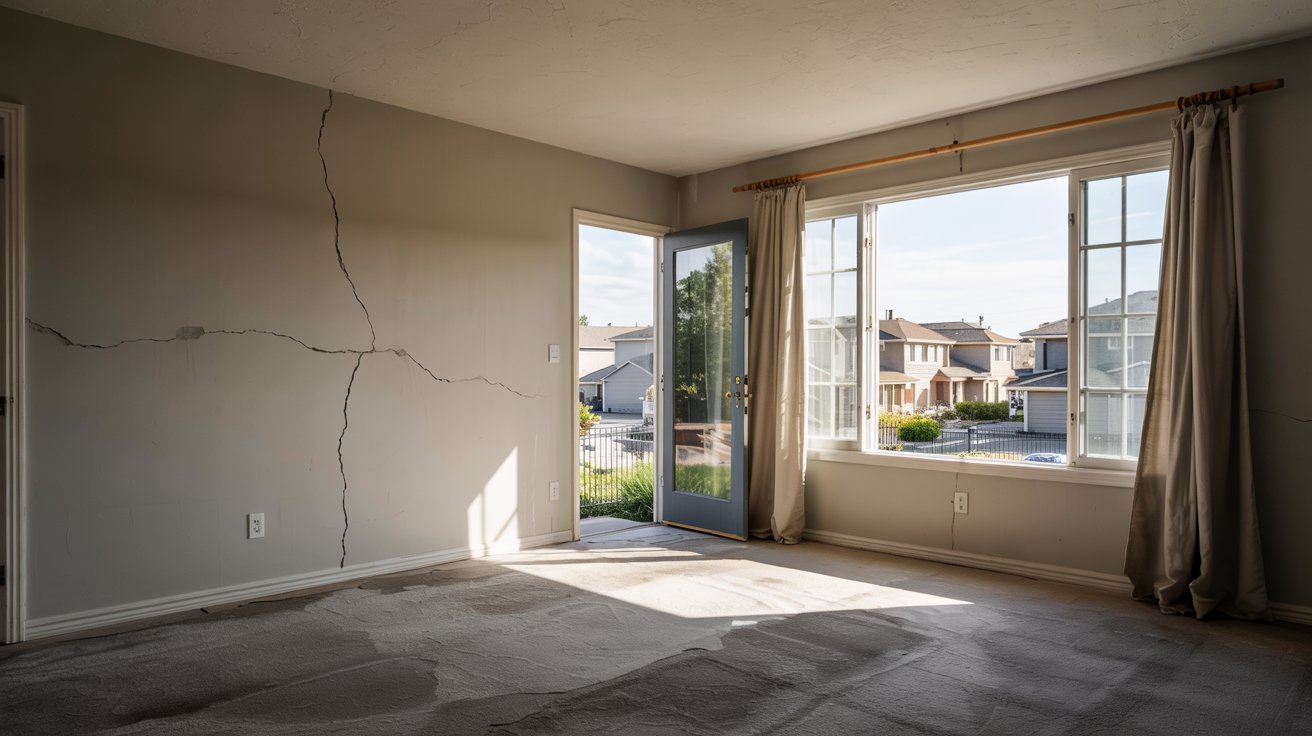Spotted early, open house red flags can save us from regret. We must learn to identify signs of hidden damage, cover-ups, or seller manipulation. This list explains the top 8 red flags, so we protect our future home and wallet.
1. Inspect for Fresh Paint in Isolated Areas
Fresh paint on small spots often hides damage. We need to be cautious if we see patchy or mismatched paint. It may be covering mold, water stains, or cracks.
Check ceilings, baseboards, and basement walls. If only part of a wall is freshly painted, ask why. Real estate data confirms this is a tactic to conceal water leaks or structural flaws.
Also look for warped drywall or uneven textures under the paint. These often signal past repairs.
2. Check for Musty Smells or Air Fresheners
Strong scents may hide musty odors or mildew. A pleasant smell during a home tour isn’t always a good thing.
Excessive use of candles, sprays, or plugins can signal cover-ups. Musty smells often mean hidden mold or moisture. Mold remediation can cost $500 to $6,000 (HomeAdvisor).
Walk into different rooms and take a deep breath. Pay attention to laundry areas, basements, and bathrooms—common mold zones.
3. Look Closely at the Basement and Foundation
Cracks or moisture in the basement signal foundation problems. We must examine walls, floors, and corners.
Use a flashlight to inspect behind boxes or furniture. Small cracks are normal, but jagged or stair-step cracks suggest structural shifts.
Water stains or white powdery residue (efflorescence) signal leaks. According to TheClose.com, foundation fixes may cost $4,000–$12,000.
4. Watch Out for Signs of Water Damage
Stains, bubbles, or sagging spots warn of leaks. Water damage often shows up in ceilings, under sinks, and around windows.
Check ceiling corners for yellow rings. Open cabinets to spot leaking pipes. Look for warped floors near doors.
Bankrate notes leaks often go undisclosed. Use our home inspection checklist to follow up.
5. Notice Any Unusual Noise or Odors
Strange sounds or smells may point to system issues. During tours, turn off music or TVs to listen.
Buzzing may mean wiring issues. Clanking pipes suggest plumbing trouble. Burnt smells could signal fire risk.
HVAC systems should sound smooth. Smells like gas, oil, or sewer need urgent inspection.
6. Examine Windows, Doors, and Frames
Misaligned doors or stuck windows mean structural stress. These parts should open and close smoothly.
Look for cracks near window frames or uneven floors. Gaps or drafts can show poor insulation or shifting foundations.
Make sure locks work and panes aren’t foggy. Realtor.com says fogging signals failed seals, lowering efficiency.
7. Be Wary of Overly Rushed or Controlled Tours
Rushed showings may hide red flags. If the seller or agent hurries us, something might be wrong.
A good home invites time and questions. Blocked rooms or scripted tours are red flags.
Homelight says serious buyers should slow down and ask questions.
8. Check the Neighborhood for External Red Flags
The surrounding area affects property value. We must assess noise, safety, and upkeep.
Walk the block. Are homes maintained? Are there boarded windows or many listings?
Visit at different times. Use our neighborhood safety checklist and check local crime data.
Comparison Table: Open House Red Flags vs. Possible Causes
| Red Flag | Likely Cause | Potential Cost |
|---|---|---|
| Fresh paint spots | Water/mold cover-up | $1,000–$5,000 |
| Musty smell + air fresheners | Hidden moisture/mold | $500–$6,000 |
| Foundation cracks | Structural movement | $4,000–$12,000 |
| Sagging ceilings | Roof or insulation issues | $300–$3,000 |
| Foggy window panes | Broken seals | $150–$500 per window |
| Rushed showings | Concealed property defects | High repair risk |
| Neighborhood decline | Safety or desirability issues | Resale value impact |
Why Are Cover-Ups Common During Open Houses?
Sellers use cover-ups to boost appeal. Tactics include strong scents, staging, or selective painting.
We must look past the surface. Ask for disclosures. Use checklists. Flipped homes often cut corners. For financial risks, see Investopedia on flipping.
Key Takeaways
- Fresh paint, odors, and noise are warning signs.
- Check basements, windows, ceilings, and the neighborhood.
- Use home inspection checklists and neighborhood safety guides.
- For guidance, see our first-time buyer tips.
FAQs
What should I look for during an open house?
Check for smells, stains, cracks, and rushed tours.
Is strong air freshener a red flag?
Yes. It may mask mold or pet odors.
What are signs of a flipped house?
New finishes with poor craftsmanship or shortcuts.
Why do sellers rush home tours?
To hide defects or limit buyer inspection.
How can I spot water damage?
Look for stains, bubbles, and warped walls.
Want expert advice from trusted agents? Talk to us today to find your perfect home without hidden risks.

